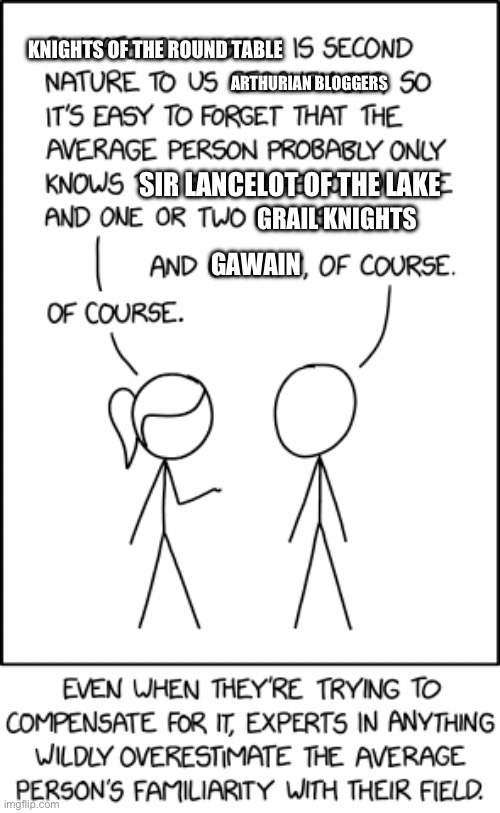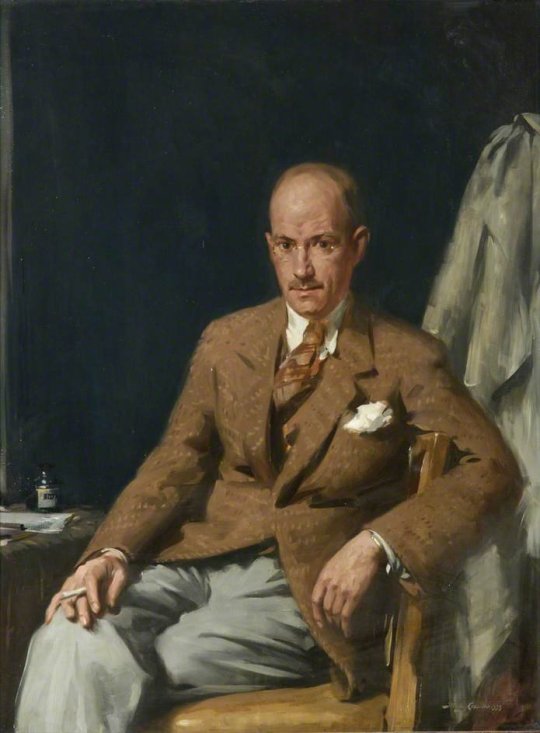#orkneys
Explore tagged Tumblr posts
Text

Agravain you're so insane
Don't ask me what happened with the design here, I was just sad that it came out not how I wanted
I'm still not sure if I like it :(
#agravaine#agravain#arthuriana#arthurian legend#arthurian mythology#arthurian legends#my art#orkney#orkney bros#orkneys
59 notes
·
View notes
Text

why is gaheris always catching strays
#this is from the squires tale by gerald morris btw#im working my way through all of his books slowly but surely#gaheris#orkneys#arthuriana#arthurian literature
73 notes
·
View notes
Text

the drama between these two families is so unserious. in retaliation to both of you killing my father for killing your father i'm gonna [remembers that the king frowns upon his knights murdering each other] fuck your mom
#still mostly focusing my research on guinevere who in a shocking turn of tables gets caught up in gawain's bullshit this time. famiglia 🤌#lamorak#orkneys#gawain#gaheris#arthuriana#(sparing morgause from the indignity of being tagged in an elaborate ur mom joke)
16 notes
·
View notes
Text


November 7th 1861 saw the death in Stromness of Isobel Gunn.
Isobel enrolled as a man in the Hudson’s Bay Company and was the first European woman to reach western Canada. She joined the service of Hudson Bay Company (HBC) in 1806 using her father’s name, John Fubbister.
Gunn quickly distinguished herself for her bravery. Her canoe treks and expeditions through the most remote stretches of Canada saw her traveling some 1,800 miles between remote trading posts. Hugh Heney, who led one of the brigades Gunn traveled with to Pembina, wrote that she “worked at anything and well like the rest of the men.” She even earned herself a pay rise for performing her duties “willingly and well.”
Although she disguised the fact that she was female at least one man knew of her true gender for she fell pregnant. On December 29, 1807, she excused herself from work at the Pembina trading post, citing stomach pains to Alexander Henry, who was the head of the post. She begged him to let her rest in his home by the fire. Henry’s journal takes up the story…..I returned to my room, where I had not been long before he sent one of my own people, requesting the favour of speaking with me. Accordingly, I stepped down to him, and was much surprised to find him extended out upon the hearth, uttering most dreadful lamentations; he stretched out his hand towards me and in a pitiful tone of voice begg’d my assistance, and requested I would take pity upon a poor helpless abandoned wretch, who was not of the sex I had every reason to suppose. But was an unfortunate Orkney girl pregnant and actually in childbirth, in saying this she opened her jacket and display’d to my view a pair of beautiful round white breasts.”
Henry’s journal continued: “In about an hour she was safely delivered of a fine boy and that same day she was conveyed home in my cariole, where she soon recovered.”
The name Gunn registered on the birth certificate? Hudson’s Bay laborer John Scarth, who she said had forced himself upon her.
This story is plausible. There are records to show that Scarth had been with Gunn at numerous HBC postings. Some historians say Gunn was trying to cover up an affair gone wrong; others believe she likely was taken advantage of by Scarth, who could have discovered her ruse as a man, and threatened to tell their employer.
Gunn and her child were returned to Scotland on the Prince of Wales on 20 September 1809. There, she lived in poverty, working as a stocking and mitten maker until her death.
7 notes
·
View notes
Text
Yeh, that is so the Orkneys.

2K notes
·
View notes
Text
Orkneys - Day 3
A change of pace today. We took a ferry to the Island for a walk to the Old Man of Hoy, a sea stack off the west shore. It was about a 5.5-mile walk round trip, but a bit of a climb up to the level of the cliff tops, and a rocky trail.
We passed some old turf-roofed buildings along the way.

And a sign warning those thinking of climbing the Old Man that they are on their own.

Then on up towards the clifftops.

As is common in this part of the world we had a variety of weather in the few hours of walking: sunny, cloudy, light rain, but mostly a great array of dramatic clouds which are great for photography!

We had great views from the cliffs.


We finally reached the cliff at the Old Man, who stands very tall. I understand that as late as the last century, there was a bridge connecting the Old Man to the cliff, making an arch. But that collapsed and now he stands alone.

That rock doesn't look solid enough for good climbing to me, but there is no way I was ever tempted to climb something like that.
We walked back to the bay where we left the vehicle. There were a few houses there.

On the way back to the ferry, we stopped at the Dwarfie Stane, a large erratic sandstone block with a tomb carved into the side in Neolithic times.

It's a pretty small tomb with a small chamber on each side. It's remarkable in that it was carved without metal tools, but otherwise, it's not really interesting. We heard about the stories told about the stone. My favorite was a disagreement between two giants over who would rule Hoy, and one giant locked up the other giant and his wife in the tomb. Since the tomb is pretty small for a normal human to crawl into, they must have been a couple of wee giants.
Back at the ferry landing, we stopped in a little cafe for some refreshments. Next door was the ruin of an old stone building with stone slab roofing.

Note that one piece of roofing slab is still in place in the corner.
Looking inside, we could see the results of the roof structure's failure. You really don't want to be in the building when it comes down.

0 notes
Text

"For whoever goes girdled with this green belt, while he keeps it well clutched closely around him, there is none so strong under heaven who can hit him; for he could not be killed by any cunning hand."
| Monkshood | Chivalry
| Peony | Shame
#sir gawain#gawain of orkney#gawain#art#sir gawain and the green knight#lord bertilak#arthurian literature#arthurian legends#arthurian fanart#arthuriana#artists on tumblr#my art#digital art#cw blood
583 notes
·
View notes
Photo
A crofter's cottage on Scotland's remote, windswept Orkney Islands

The Mainland Orkney, Scotland.
#Orkneys#Scottish islands#North Sea#crofters#stone cottage#sheep grazing#misty#Orcadian#Mainland#Scotland#UK#windswept#stone walls#remote#archipelago
846 notes
·
View notes
Text

Orkney waves 🌊
scotland.co
#scotland#scottish#travel#scenery#landscape#nature#travel inspiration#scottish highlands#landscape photography#orkney#scotlandtravel#scotland forever#naturephotography
509 notes
·
View notes
Text

consistently overestimating the general public’s level of arthurian understanding.
#arthurian legend#arthurian legends#Arthuriana#knights of the round table#sir lancelot#sir lancelot du lac#sir lancelot of the lake#sir gawain#sir gawain of orkney#sir perceval#sir percival#sir galahad#lancelot#gawain#perceval#percival#galahad#meme#my post
3K notes
·
View notes
Text

Fratercula arctica
Puffin, westray Orkney islands
461 notes
·
View notes
Text

yeah <3
#no one comment on how much joy im getting from a childrens book please#this is from the squires tale by gerald morris#arthuriana#orkneys#gawain#tor
63 notes
·
View notes
Text





Skara Brae, Neolithic Orkney
Ryan Denny
#uk#orkney islands#neolithic village#history#preservation#interesting#travel#scotland#vikings#curators on tumblr
745 notes
·
View notes
Text


On November 7th 1974 Eric Linklater, the novelist and playwright, died in Aberdeen.
Although born in Wales, Linklater always considered himself as an Orcadian. Indeed like many on the island Eric can claim viking heritage and his family has documental proof that goes back to the 15th century an 18 generations.
There is a great wee story about his Great- Grandfather that I am sure you will appreciate, he worked on the whaling fleet from Stromness. When given leave he’d walk 10 miles home to Harray. It’s said there were many ale-houses by the road, and he never did the journey in less than 3 days!
Educated at Aberdeen University, Linklater spent many years on Orkney, the birthplace of his father, and even commanded the Orkney garrison during the Second World War.
Linklater was initially rejected by the army because of his poor eyesight, but joined up in 1917, his poor eyesight however meant he was not meant to see any action, he was sent to a Yeomanry regiment stationed in the north of England.
I read he lied about his age to join up, he would have been around 17 at the time, it’s partly true,and if you look at the pic of him in his uniform he does look very young.I did manage to dig up the truth about the lie though . While in England he heard that they were sending a small draft to the Black Watch in France, he made a few adjustments to his own medical record (improving his eyesight and adding a year to his age) and, using his own authority as Orderly Corporal, added his own name to the list of those sent abroad.
From 1919 to 1925 he studied at Aberdeen University, first in medicine and then in English. Between 1925 and 1927 he was an assistant editor of the Times of India, living in Bombay. After a year working at Aberdeen University in 1927-8, he spent two years as a Commonwealth Fellow in the USA, at Cornell and Berkeley.
Eric Linklater began publishing prolifically in 1929: altogether he wrote 23 novels, 3 volumes of short stories, 3 autobiographies, 10 plays, and 23 books of essays and non-fiction, as well as the books mentioned above in the first paragraph. Juan in America and Private Angelo are perhaps his best-known novels. He loved the Icelandic sagas, and wrote his own: The Men of Ness: the Saga of Thorlief Coalbiter’s Sons ; later, in 1955, he published a book about the sagas, called The Ultimate Viking.
On 1st June 1933 he Eric married Marjorie MacIntyre, and after a period in Italy they settled at Dounby in Orkney; they had four children.
Between 1939 and 1941 Linklater commanded the company of Royal Engineers on Orkney. In 1941 he was posted to the directorate of public relations in the War Office, and from 1944 to 1945 served in Italy, where he acquired the experiences necessary for writing Private Angelo, which was dedicated to the Eighth Army. It was a book about courage, but it did not celebrate war. Angelo’s remark “I hope you will not liberate us out of existence” might well have inspired William Tenn’s celebrated science fiction story “The Liberation of Earth” . In 1951 he published a history of that part of WW2, The Campaign in Italy, and, with the temporary rank of lieutenant-colonel he visited Korea.
In 1945 Eric Linklater was elected rector of Aberdeen University, and in 1947 the family moved to to Ross, and later to Aberdeenshire. From 1968 to 1973 he was deputy lieutenant of Ross and Cromarty.
Diana Gabaldon author of the Outlander books, told National Geographic: she researched for her series of books by reading a Linklater book. "I was reading a research book called The Prince in the Heather. She said. The account of Jamie Fraser surviving Culloden is partly based on a true story in the book where a Fraser of the Master of Lovat's regiment” took refuge in a farmhouse with 18 others and survived the slaughter.
Eric Linklater died in Aberdeen on this day 1974 and was buried in the Harray churchyard in Orkney. His widow, already an active political campaigner, moved back to Orkney, to serve as chairman of the Orkney Heritage Society. She helped to establish the St Magnus festival, and campaigned for the Scottish National Party.
Orkney makar George Mackay Brown wrote in the Orcadian, 14th November 1974,
“Orkney is a poorer place without him; even though for most of the year, he lived outside the islands. It is fitting that his dust should be brought back to lie in Orkney earth.”
6 notes
·
View notes
Text

Stones of Stenness, Orkney, Scotland in 1906
858 notes
·
View notes
